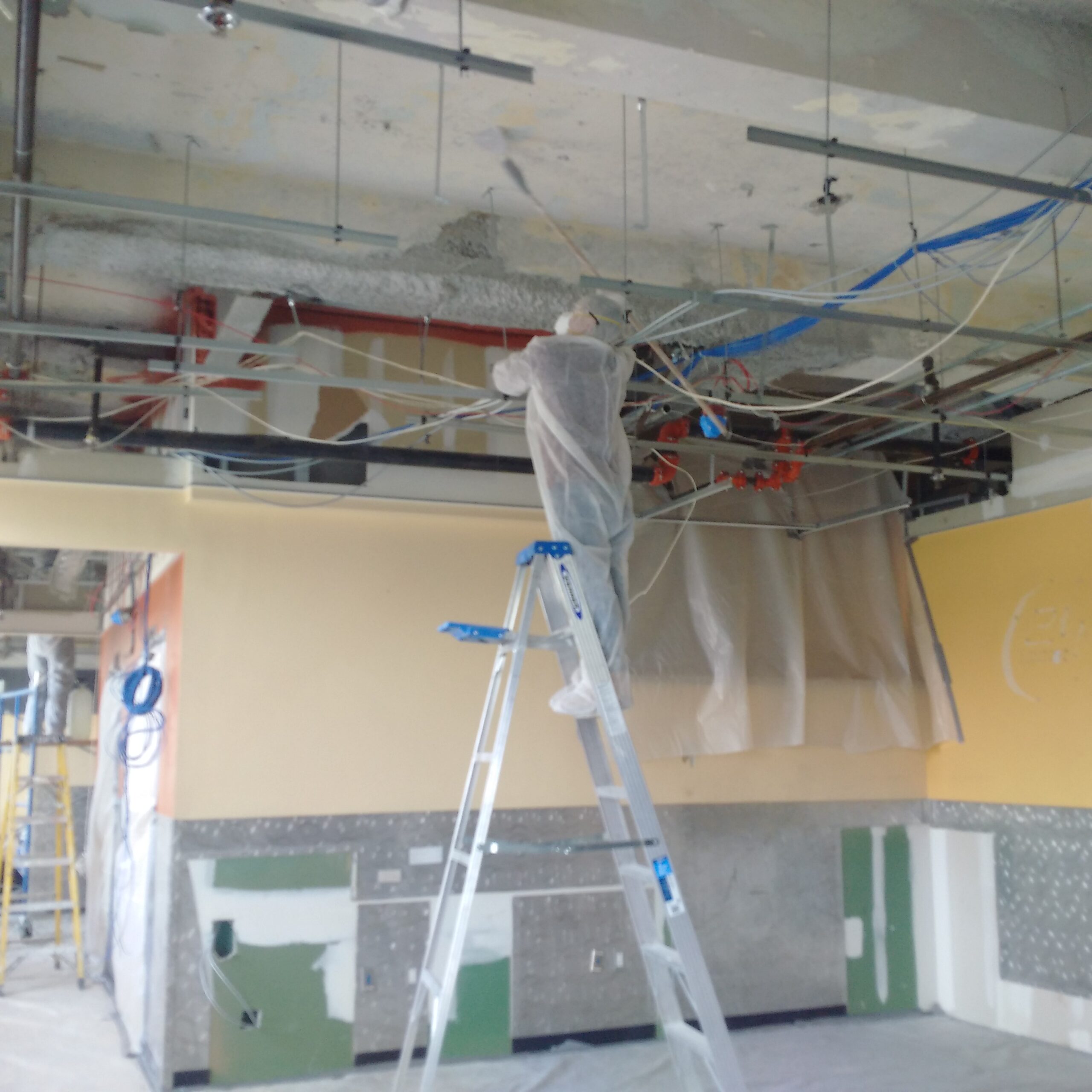Reputable DOH & HPD Lead Violation Removal in NYC-- Protect Your Residential property
Reputable DOH & HPD Lead Violation Removal in NYC-- Protect Your Residential property
Blog Article
Comprehensive Guide on Effective Lead Offense Elimination Techniques
In the world of ecological security, addressing lead offenses requires a meticulous and organized strategy. This extensive guide starts by highlighting the vital first actions of recognizing lead hazards with innovative analysis and screening approaches. The guide clarifies on the relevance of sticking to strict safety procedures throughout the removal procedure, including the usage of appropriate PPE and separating impacted areas.
Recognizing Lead Hazards
Identifying lead hazards is a crucial initial step in reducing the dangers connected with lead exposure. Lead, a toxic metal, can be present in different environmental mediums, including paint, soil, water, and dust. It poses serious health dangers, especially to kids and expectant women, causing neurological damages and developing hold-ups. Accurate identification of prospective lead resources is essential for effective removal.
The preliminary stage in determining lead risks involves recognizing common lead sources within the constructed atmosphere. Structures built before 1978 are particularly prone due to the prevalent usage of lead-based paint during that duration. Furthermore, soil contamination can happen from weakening exterior paint, commercial emissions, or historical usage of leaded gas.
An additional significant resource is lead piping and plumbing fixtures, which can leach lead right into alcohol consumption water. Durable goods such as toys, porcelains, and imported items may likewise contain unsafe lead degrees. Significantly, occupational atmospheres and leisure activities including lead can track contaminants right into homes.
Analysis and Screening
When addressing lead hazards, reliable analysis and testing are vital. This important action guarantees the recognition and quantification of lead visibility, thereby assisting subsequent remediation efforts. First analysis generally involves an aesthetic assessment to identify possible lead sources, such as wearing away paint or infected dirt. This is enhanced by more rigorous testing approaches to ascertain the degree of contamination.

Dirt clean tasting is another essential strategy, especially in property setups. By collecting samples from floorings, windowsills, and other surfaces, this approach gives understandings right into possible direct exposure risks. Dirt testing around structure perimeters is crucial to spot lead contamination that might posture risks, specifically to youngsters.
Safe Elimination Procedures
Upon completing comprehensive analysis and screening, applying secure elimination procedures is the following vital phase in dealing with lead threats. This process makes certain that lead-contaminated products are effectively and securely eradicated, reducing risk to both workers and locals. The initial step involves isolating the affected location utilizing plastic sheet and appropriate securing methods to avoid the spread of lead dust.
Employees should wear ideal personal safety devices (PPE), including respirators, gloves, and disposable coveralls, to minimize direct exposure. Using specialized devices and damp methods, such as damp fining sand or making use of HEPA-filtered vacuum cleaners, reduces the dispersion of lead particles. It is crucial to prevent dry fining sand or rough blowing up, as these techniques can generate unsafe lead dirt.
Waste disposal is one more essential component; all infected materials should be safely bagged and classified according to EPA and regional guidelines. Additionally, thorough cleaning of the workplace with HEPA vacuums and damp wiping makes sure the elimination of recurring lead particles.
Post-Removal Confirmation

Verification of effective lead removal, recognized as post-removal confirmation, is vital to guarantee the safety and security and habitability of the remediated location. This process includes a series of meticulous evaluations and tests developed to identify any kind of recurring lead bits that might present wellness risks. The preliminary step usually includes a visual inspection to assess the completion and quality of the remediation work. This assessment makes certain that all recognized resources of lead have actually been attended to which no visible signs of contamination continue to be.
Adhering to the visual examination, ecological tasting is performed. This involves accumulating dirt, dirt, and occasionally water examples from the remediated location. Approved labs assess these examples to gauge lead degrees, ensuring they drop below the safety limits developed by governing bodies such as the Environmental Security Firm (EPA)
On top of that, air quality testing might be done to find air-borne lead bits, especially in instances where comprehensive lead-based paint see this page elimination or improvement has taken place. The results of these tests provide quantitative information confirming that the lead levels are within acceptable limits.
Inevitably, directory post-removal confirmation acts as an essential checkpoint, verifying the effectiveness of the lead reduction initiatives and safeguarding the health and wellness of residents and visitors.
Precautionary Measures and Upkeep

A vital preventive procedure consists of using lead-safe licensed contractors for any remodelling, fixing, or paint tasks. These professionals are educated in techniques that decrease lead dust and debris. In addition, preserving colored surfaces to avoid chipping or peeling is crucial, as weakening paint can release lead particles into the setting.
Educational efforts targeting homeowner and renters concerning the dangers of lead and the importance of reporting any kind of possible hazards can additionally improve preventative initiatives. Regular cleansing utilizing HEPA vacuum cleaners and damp wiping techniques can dramatically reduce lead dust accumulation.
Conclusion
In summary, effective lead violation elimination demands a meticulous strategy encompassing detailed evaluation, specific testing, and strict elimination procedures. Guaranteeing safety and security via correct isolation and individual safety devices stays paramount. Post-removal verification by means of environmental tasting and air his comment is here top quality testing confirms conformity with well-known safety standards. Continuous examinations and maintenance are essential to mitigate future lead threats, thereby safeguarding public wellness and ensuring sustained compliance with regulative needs.
Report this page